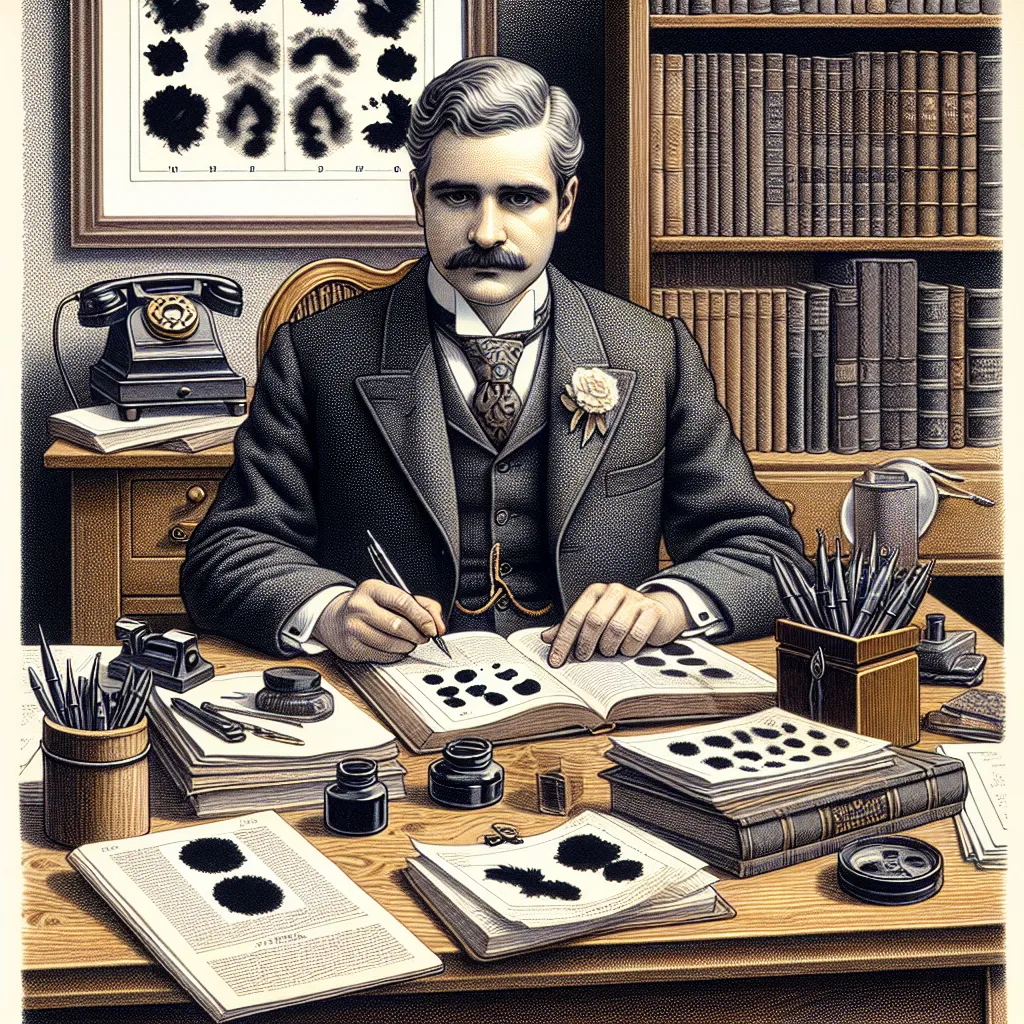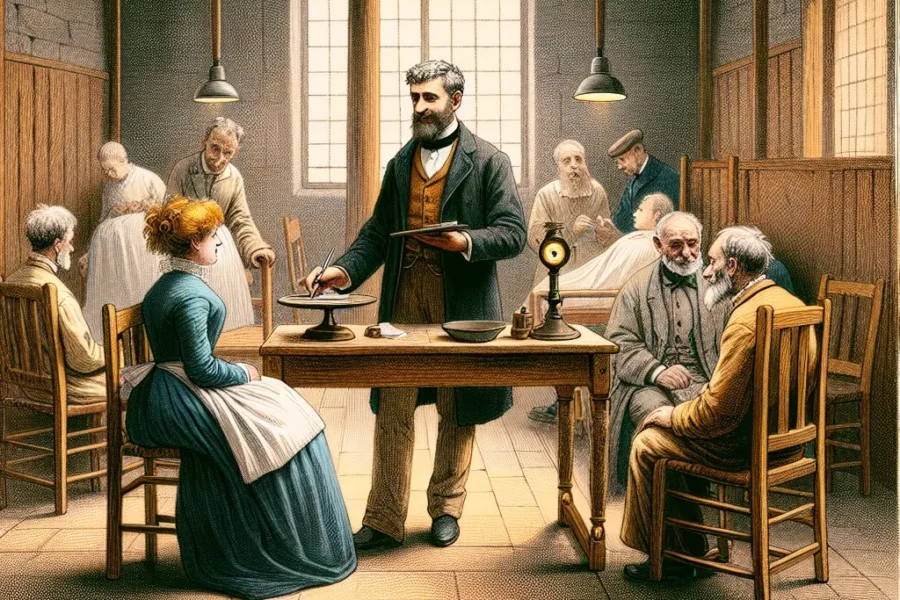Hermann Rorschach and the Art of Personality Analysis
Hermann Rorschach, a name that echoes through the corridors of psychology and art, represents a unique intertwining of creative stimulus and scientific inquiry. This Swiss psychiatrist, whose fascination with human psyche and visual interpretation led to the inception of one of the most famous psychological tools—the Rorschach inkblot test—revolutionized the way personality analysis is conducted, transforming abstract images into windows to the soul.
Born in 1884 in Zurich, Hermann Rorschach was no stranger to the power of artistic expression; he was known among his peers for his love of painting and his nickname, ‘Klex,’ meaning ‘inkblot.’ This interest in visual stimuli and their subjective interpretations set the foundation for his later work. Through combining his artistic sensibilities with his rigorous medical training, Rorschach developed a tool that would garner worldwide recognition for its innovative approach to understanding personality traits and underlying emotional functioning.
The Rorschach inkblot test, also known as the Rorschach psychodiagnostic test, emerged in 1921 as a psychological assessment wherein individuals respond to a series of ten standardized inkblots. The unique and subjective perceptions of each respondent supposedly provide insights into their personality characteristics and emotional state. This method thrived on the idea that projecting inner thoughts onto ambiguous images could reveal underlying conflicts, desires, and the functioning of personal defense mechanisms.
The inkblots themselves—a series of symmetrical figures—are devoid of any intentional representation and were meticulously designed by Rorschach to be open to a plethora of interpretations. As individuals verbalize what they see in these blots, a trained psychologist takes note of their responses, scrutinizing not just the content but also the thought process, the level of detail, color interpretations, and the location of focus within each inkblot.
Through the test, Hermann Rorschach believed that people would project their unconscious thoughts onto the stimuli, making the inkblots a canvas for the internalized conflicts and workings of the mind. It was his conviction that a systematic analysis of these projections could yield quantitative scores and qualitative narratives, thereby providing a tangible approach to the nebulous territory of personality assessment.
Despite its subjective nature, the Rorschach inkblot test incorporates scoring systems to quantify responses. The Exner scoring system, in particular, is one of the more comprehensive and widely utilized methods developed in the 1960s by John Exner as an attempt to standardize the interpretation of Rorschach responses. This scoring involves detailed metrics assessing areas such as response times, the location of focus in the inkblots, form quality, content themes, and determinants such as the presence of movement or color.
Rorschach’s methodology has had a profound impact on the fields of psychology and psychiatry, providing a unique approach to clinical assessment, psychotherapy, and research. His test has been applied in various contexts, ranging from diagnosing mental disorders to assessing personality traits and even in forensic psychology to gauge the credibility of defendants and witnesses. It has also been utilized in cross-cultural studies, examining how cultural and societal backgrounds can affect perception and cognitive processes.
However, like any psychological tool, the Rorschach inkblot test has been subjected to scrutiny, debates, and challenges to its validity and reliability. Critics question the scientific rigor of the test and the potential for subjective bias in its interpretation. Additionally, some research suggests that projective tests like Rorschach’s may not be as effective in predicting behavior or outcomes as other more structured psychological assessments.
Despite these criticisms, Hermann Rorschach’s legacy endures as his inkblot test continues to intrigue both psychologists and the public due to its enigmatic and artistic nature. It remains a testament to the complexity of human psychology and the challenge of developing reliable and valid tools for personality analysis. Rorschach’s fusion of art and science has cemented his place in history, inviting us to explore the depths of the human psyche in a way that is as abstractly beautiful as it is analytically challenging.
For psychologists and practitioners today, the Rorschach inkblot test serves not only as a clinical instrument but also as a symbol of the interpretive intricacies inherent in psychoanalysis. Its usage demands a careful balance between empirical data and intuitive understanding, reflecting the nuanced continuum between art and science that defines much of the psychological field.
Aside from the clinical applications, the cultural influence of Rorschach’s creation is undeniable. The inkblots have transcended their psychiatric origins, permeating diverse sectors such as art, literature, and media, often used metaphorically to illustrate the subjectivity of human perception and the enigmas of understanding one another’s internal worlds.
The realm of personality analysis has undoubtedly benefited from Hermann Rorschach’s innovative assessment tool, illustrating the timelessness of his inkblots and their capacity to spark conversation and investigation into the layers of the human personality. As we continue to seek understanding of ourselves and others, tools like the Rorschach test provide a unique perspective and contribute to the ever-evolving tapestry of psychological assessment methods.
In conclusion, Hermann Rorschach’s imprint on psychology stretches beyond the mere diagnostics of personality. His work exemplifies a rare blend of creative ingenuity and scientific pursuit, offering a perpetual source of fascination and study. Although his life was tragically cut short at the age of 37, his contributions thrive a century later, inviting us to ponder his fundamental question: What do you see? Through this simple query, we uncover not just the art of personality analysis but the very nature of human subjectivity and interpretation. Hermann Rorschach’s legacy endures, encouraging us to look beyond the surface, into the intricate and captivating world of personality, where each blot is a story, each interpretation a discovery, and each analysis an artwork unto itself.



Leave a Comment